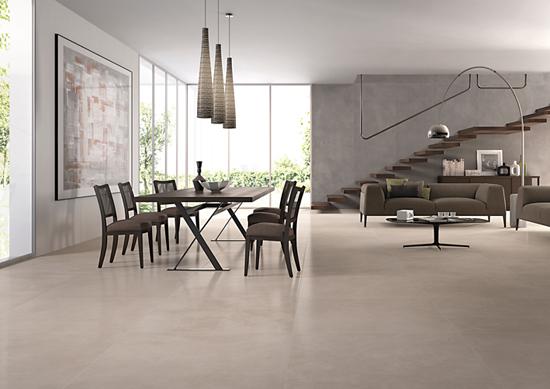Cersaie: the Global Tile Show - November 2011
By Kemp Harr
Once again, Cersaie, the International Exhibition of Ceramic Tile and Bathroom Furnishings, held in Bologna, Italy the last week of September, perpetuated its reputation of being the premier global event for this industry. Now in its 29th year, this five-day show drew over 81,000 attendees and 965 exhibitors from 31 countries. While attendance was off 2% from the previous year, most of that decline was from Italians—the international head count was up 4%.
It should come as no surprise that Italian producers of ceramic tile continue to dominate the world market, commanding a 41% share from a dollar perspective—this includes the value of the product manufactured in other countries by Italian owned factories. And despite the sluggishness of the current global economy, consumption of Italian tile for the first half of 2011 grew by approximately one percent.
Most of this growth and market leadership can be attributed to the innovation and design focus that attendees can see firsthand by walking the massive exhibition. The Italian tile trade association is quick to point out that continued and heavy reinvestment in this industry—which in 2011 alone was $381 million—is one of the key reasons the Italians continue to lead the world tile market. But a second and just as significant reason is the Italians’ focus on fashion and design.
Trends at Cersaie
Prevalent throughout the show were larger format tile, rectangular shaped tile, thin tile, faux wood and faux stone looks, and high-low textures. From a macro perspective, most of the styling was subdued versus flashy with more minimalistic concrete looks, soft natural coloring and satin finishes. Gone for now are the flashy, metallic, glossy, high contrast looks that dominated the show just a few short years ago.
The wood look was very prominent this year, including several more refined designs. Some booths offered basic strips of wood with detailed grain while others perfected the weathered, textured, distressed look, giving the product much more character and variation. Some companies deviated from the natural plank shape of real hardwood by creating large format square tiles.
The same holds true with the faux stone products. Gone are the days when imitation marble and travertine looked fake. In fact, producers are now able to emulate the surface imperfections that you find in travertine and the three dimensional veining and translucent depth of natural white marble that you couldn’t copy with manmade products.
While Europeans still like their bold colors and there were areas where you could find bright red, orange, purple and green tiles, most of the large producers seemed to recognize that natural and muted colors are in. Grey, beige, taupe, toast, black and some white took center stage. Most designers today seem to be using the flooring as a neutral background in their design palette and saving the accent of the overall design for walls or interior furnishings.
Technological Innovations
There is no denying that digital printing technology has revolutionized this industry in the last three years. Prior to ink-jet printing, the color glazes used to decorate tiles were added using gravure rolls and silk screens. With these processes, each color had to be added one at a time and the printing screen or roll had to come in contact with the product. On top of that, the only way to vary the image that each tile got as it went down the production line was to have multiple print stations with alternating images. Now, with the use of ink-jet technology, small microdots of different colors can be sprayed onto the tile medium in one pass without touching the product, and with each pass the image can be changed. As a result, intricate multicolored images can be added to textured surfaces and image repeats can be virtually eliminated. In addition, larger hi-res images can by transferred to large format tiles. Amazingly, the look that tile producers are able to create on a manmade product gets better and better each year.
Thin tile is another innovative development that continues to evolve since it was first introduced five or six years ago. Laminam owns a patent on the extruded porcelain process but other companies have discovered alternative methods for obtaining similar results. Some companies like Lea are now offering a thin tile that’s 3.5mm thick, 40” wide and 10’ long. Lea’s product requires a fiberglass backing but Marazzi has developed a 4.8mm product that doesn’t require laminated reinforcement and still meets the fracture strength standard for porcelain tile. Not only does this thin tile technology reduce raw material usage and manufacturing energy but it is also lighter to transport. In addition, it expands the applications where tile can be used to exterior building skins, door skins, seamless countertops and even case goods surfaces.
Copyright 2011 Floor Focus
Related Topics:CERSAIE , Marazzi USA, RD Weis, Mohawk Industries
